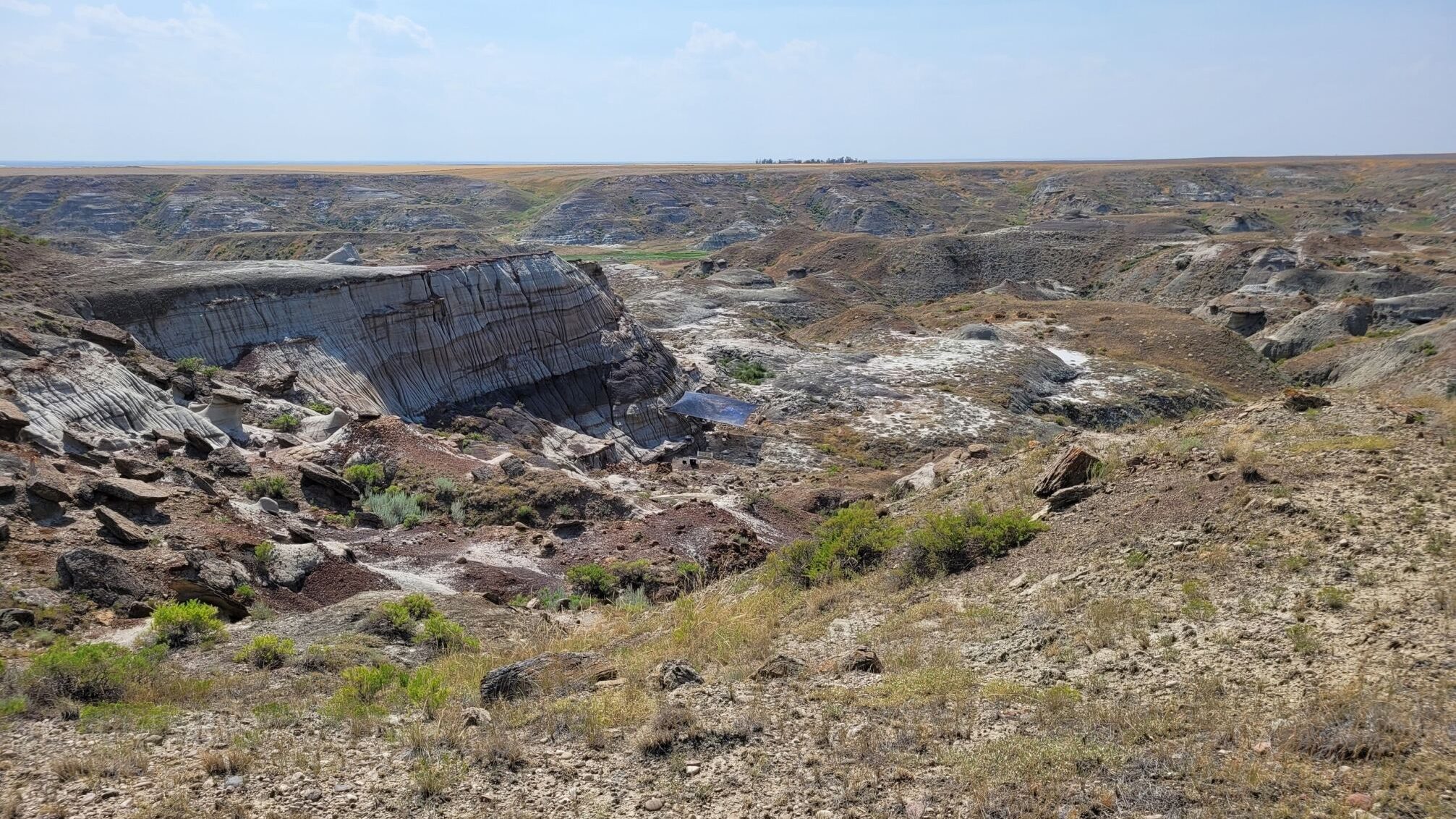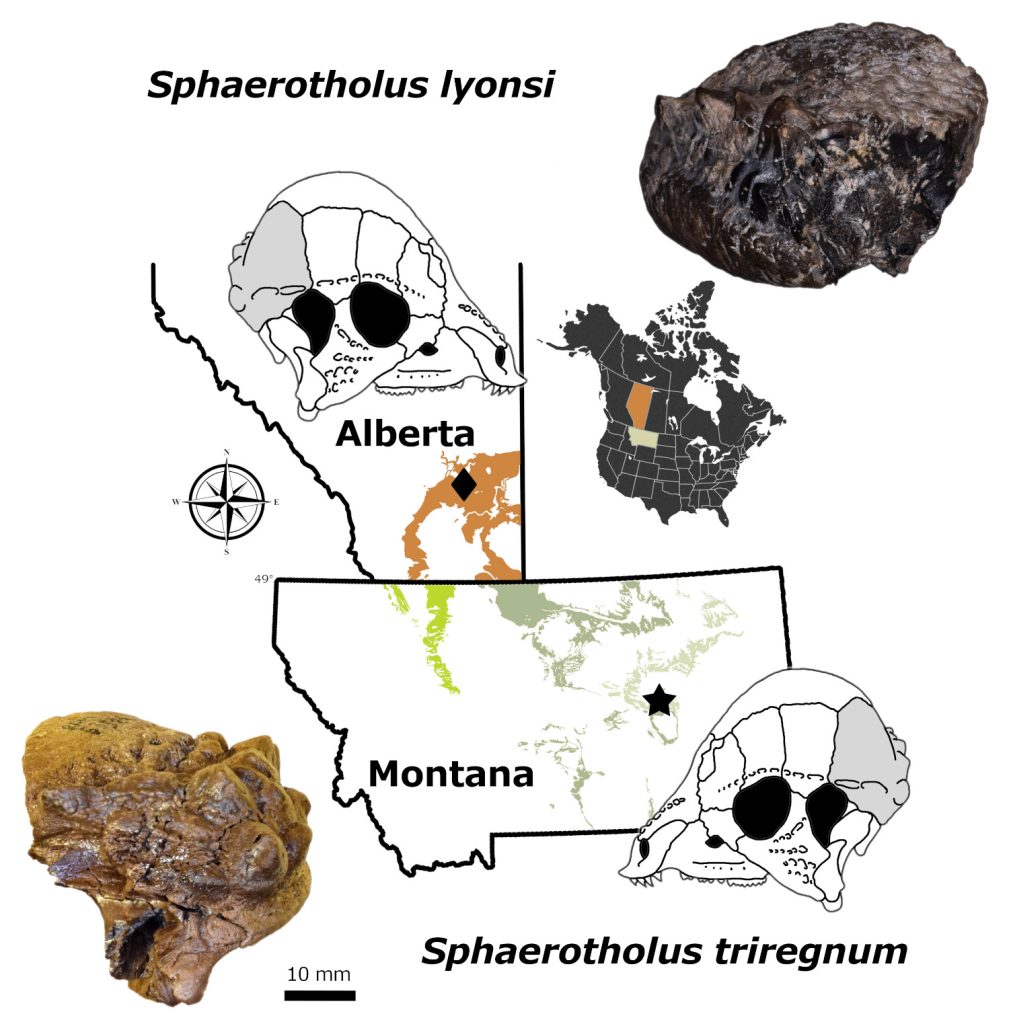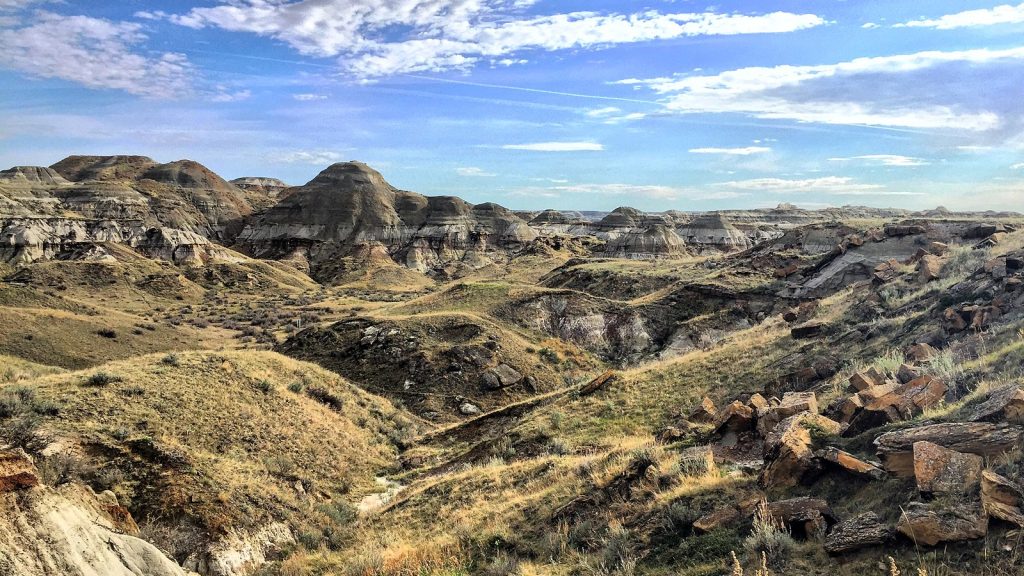
As the museum’s curator of vertebrate paleontology, making scientific discoveries about dinosaurs is a key part of my job. Recently I published some exciting ones: two new species of dinosaurs! I first began this research as part of my PhD work, and my findings are now available in the scientific journal, Papers in Palaeontology.
These two new species belong to the dog-sized pachycephalosaur genus, Sphaerotholus (pronounced sfair-oh-thol-us). Pachycephalosaurs are commonly called the “dome-headed dinosaurs” because they had thickened, bowling ball-like domes of bone on the top of their heads. The bones around their domes had different shapes and ornamentation that paleontologists use to tell each kind apart.

Our first new species is called Sphaerotholus triregnum. This dinosaur had three rows of ornamentation around its dome and lived about 66 million years ago. The second species, Sphaerotholus lyonsi, had two rows of ornamentation around its dome and lived about 77 million years ago.
So why are these two new species important? It all comes down to when they lived and what their heads looked like.
Before my team’s discoveries, scientists knew of three other Sphaerotholus species. All of them only had one row of ornamentation around their domes. By looking at patterns of when these and our two new species lived, we now hypothesize there were actually two lineages of Sphaerotholus: one with a single row of head decoration and another other with multiple. And, at any point in time when these dinosaurs existed, the single and multiple-ornamented species lived alongside one another.
One big outstanding question is why one lineage of Sphaerotholus evolved a single row of ornamentation around its dome, while the other evolved multiple rows. Was it for display? Was it for showing off to one another, or identifying other members of their kind? With future research, perhaps we’ll be able to make more informed hypotheses about this question.

Dinosaur Provincial Park, Alberta, Canada
Another important aspect of our discoveries is that it shows us that there are likely other small-bodied dinosaurs out there yet to be discovered. We found Sphaerotholus triregnum in the Hell Creek Formation, the most famous dinosaur graveyard in the world. This is also the discovery place of well-known dinosaurs like Tyrannosaurus and Triceratops. Sphaerotholus lyonsi was from the Dinosaur Park Formation, the most famous and well-studied dinosaur formation in Canada.
While paleontologists have been exploring these locations for well over 100 years, no parts of these two new dinosaurs had ever been found before. This, to me, is an exciting aspect of studying dinosaurs. Much like studying living plants and animals, and even outer space, no matter how well we think we’ve searched, there are always new discoveries to be made!